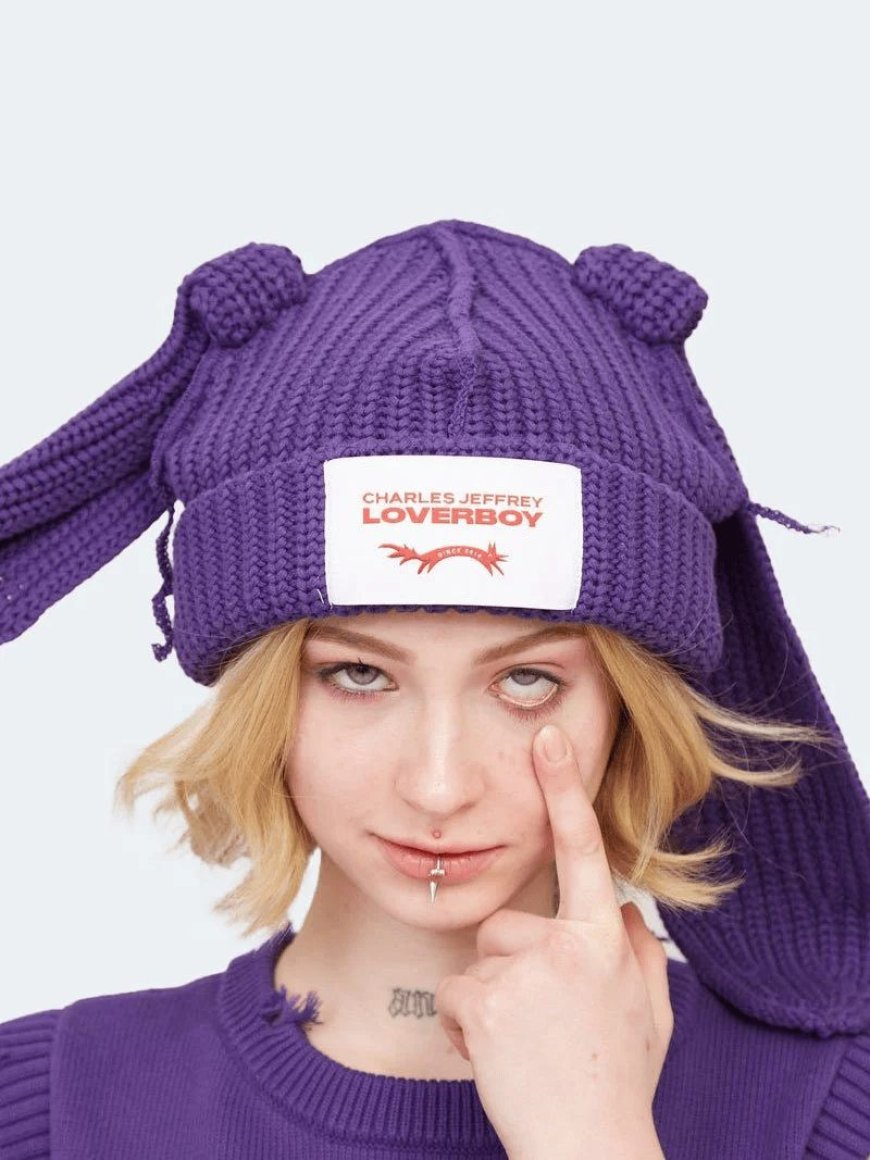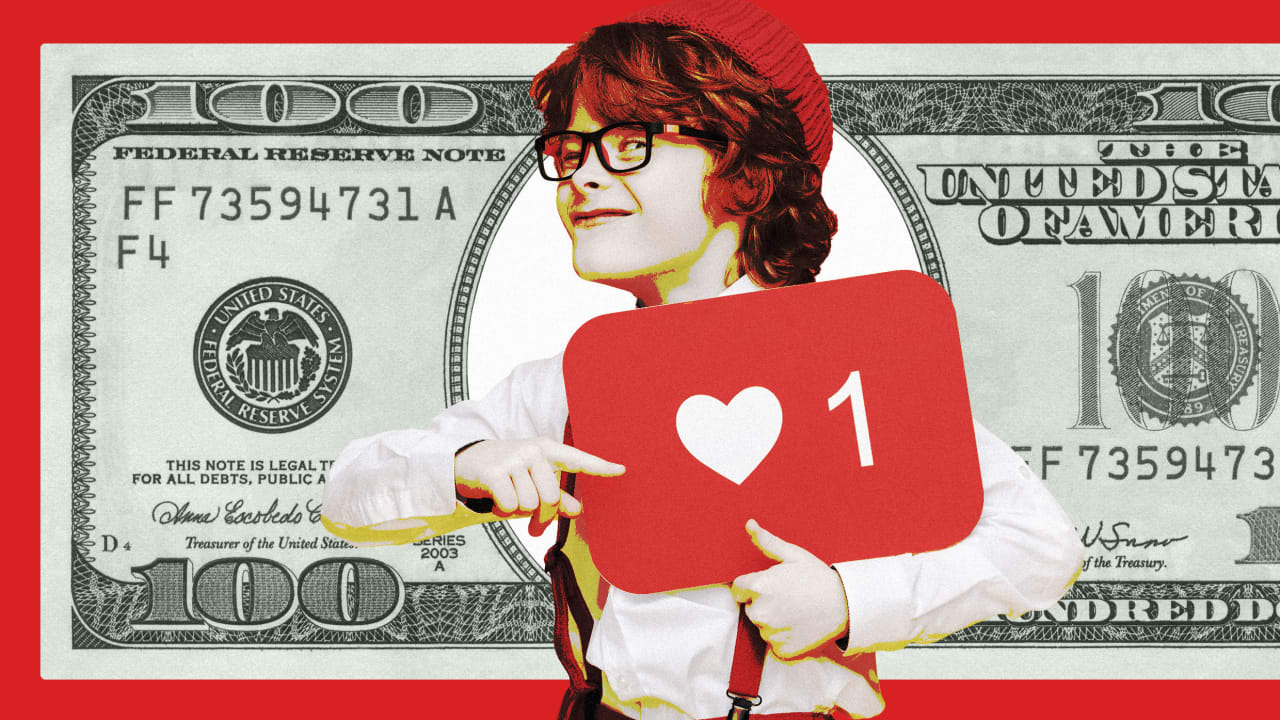Loverboy Hat: The Symbol of Youthful Rebellion and High Fashion Quirk
Shop original Loverboy Hat Beanie at sale price from online store in USA Get up to 40 off on Loverboy Hat Get fast shipping worldwide

Introduction: The Making of a Modern Icon
In the ever-evolving world of fashion, certain items transcend their material form to become cultural markers—artifacts of identity, rebellion, and reinvention. The Loverboy Hat is one such phenomenon. Born out of the creative mind of Charles Jeffrey, the founder of the London-based brand Charles Jeffrey LOVERBOY, this hat is more than an accessory; it is a wearable manifesto of individuality and artistic expression. With its flamboyant horns, hand-crafted textures, and unapologetic colors, the Loverboy Hat has carved a niche as the darling of avant-garde street style, queer fashion, and Gen Z counterculture. To wear it is to speak without words—to declare your presence as loudly and boldly as possible in a world that often demands silence.
A Glimpse into Charles Jeffrey’s Vision
To understand the Loverboy Hat, one must first understand the mind behind the madness. Charles Jeffrey is not your typical designer. Trained at Central Saint Martins, his work exists at the intersection of fashion, performance art, and subcultural history. His collections draw heavily on his Scottish heritage, club kid aesthetics, and the raw energy of London's underground queer scene. The Loverboy Hat was originally introduced as part of his broader vision to create a “LOVERBOY universe”—a utopian space where gender norms dissolve, color reigns supreme, and fashion is an act of resistance.
The hat itself, particularly the now-iconic horned wool version, is a visual representation of this ethos. Reminiscent of both punk rebellion and mythical creatures, it embodies dualities: playful yet defiant, artisanal yet edgy, high fashion yet deeply street-rooted. It isn’t designed to blend in—it’s designed to provoke, inspire, and disrupt.
The Anatomy of the Hat: A Handmade Revolution
Unlike mass-produced headwear that clutters fast fashion shelves, the Loverboy Hat is crafted with intentionality. Most versions are handmade in the UK, knitted from pure wool or mohair with an exaggerated, sculptural quality. The now-classic design features two large, curved horns that extend outward from the top of the cap, giving the wearer an almost devilish silhouette—part faun, part punk god, part cartoonish superhero.
What’s remarkable is that despite the hat's seemingly whimsical nature, it’s anchored by an impressive craftsmanship ethic. The knit textures often include subtle imperfections, which only add to its charm and authenticity. Each piece feels like a personal artwork, hinting at the hours of labor and love poured into its creation. It’s a return to slow fashion principles in an era obsessed with speed and consumption—a rebellious stance in itself.
A Subcultural Magnet: From the Runway to the Underground
While the Loverboy Hat has graced the heads of models on high-fashion runways, its true power lies in its migration to the streets. It has been embraced by a broad spectrum of communities—especially within queer, punk, and avant-garde circles. For many, it’s a symbol of freedom and fluidity, unbound by gender or societal norms.
Street style stars, TikTok creatives, and nightlife icons have adopted the hat as their own. It often appears in music videos, at underground parties, and in Instagram posts tagged with #LOVERBOYARMY—a term that refers to the brand’s fiercely loyal and expressive fanbase. In this way, the hat has become more than a fashion statement; it's a badge of belonging within a tribe that values authenticity, creativity, and nonconformity.
The Viral Moment: When the Internet Takes Over
In 2022 and 2023, the Loverboy Hat began to explode across digital platforms. TikTok users created viral outfit videos with the hat as the centerpiece. Influencers and fashion vloggers declared it the "must-have" accessory for breaking out of minimalism fatigue. As maximalism roared back into mainstream taste, the Loverboy Hat became its crown.
Memes were made. DIY versions popped up on Etsy. Even fast fashion brands began mimicking the design—often poorly—which only solidified the original’s status as the real deal. But what set the Loverboy Hat apart wasn’t just its look; it was its story, its roots in subculture, and its defiance of commercial polish.
Beyond Gender: The Fluid Language of Fashion
One of the most profound aspects of the Loverboy Hat is its gender neutrality. Charles Jeffrey never intended for it to be a “women’s hat” or a “men’s hat”—instead, it exists in a fluid space that mirrors the modern conversation around gender identity. It fits seamlessly into wardrobes regardless of gender presentation. Whether paired with a flowing dress, combat boots, or oversized tailoring, the hat adapts to the energy of the wearer rather than forcing them into a box.
This open-ended design philosophy has made the hat especially beloved within queer and non-binary communities. It provides a form of armor, a visible signifier that signals inclusion, openness, and creativity. In a fashion landscape that often still relies on binaries, the Loverboy Hat disrupts the norm with both elegance and audacity.
Celebrity Co-Signs and Cultural Capital
Celebrity endorsements have certainly helped the Loverboy Hat reach new heights. Icons such as Harry Styles, Rihanna, and Michaela Coel have all been spotted in variations of the piece. These co-signs brought the hat to wider audiences, allowing it to be seen not just as a niche fashion curiosity but as a legitimate cultural object.
Yet even with this high-profile attention, the Loverboy Hat has managed to retain its indie soul. It hasn't been diluted by overexposure, perhaps because its design is too bold, too strange, too specific to be replicated en masse without losing its essence. It remains, stubbornly and beautifully, a piece for those who get it.
The Emotional Resonance: Why People Connect
Why do people love the Loverboy Hat so deeply? It’s not just because it’s “cool” or eye-catching. There’s an emotional resonance that comes with wearing something that feels like a piece of wearable theater. For many, the hat evokes childhood imagination, fantasy books, or the thrill of sneaking into clubs that promise freedom from societal constraints. It triggers memories and dreams, tapping into something primal and poetic.
Fashion at its best is about transformation—and the Loverboy Hat offers that in abundance. It can turn a bad day into a statement, a mundane outfit into a performance, a quiet person into a walking piece of art. In a world dominated by grayscale uniforms and safe silhouettes, the hat screams for attention and self-celebration. It reminds us that it’s okay—necessary, even—to be strange, loud, and uncontainable.
Sustainability and Ethical Roots
Another reason for the hat’s popularity lies in its ethical production. As the fashion industry faces increasing scrutiny over environmental damage and labor exploitation, brands like Charles Jeffrey LOVERBOY stand out for their commitment to sustainability. Many Loverboy Hats are produced with locally sourced yarns and crafted in small batches by artisans.
This slower, intentional process not only ensures quality but also supports local economies and traditional craftsmanship. In choosing the Loverboy Hat, consumers align themselves with a movement toward conscious fashion—an increasingly important factor for younger buyers who see clothing as a form of political expression.
The Future of the Loverboy Hat: Legacy in the Making
The Loverboy Hat isn’t just a momentary trend—it’s on track to become a fashion relic of its generation. Like Vivienne Westwood’s punk pieces or the iconic Balaclava during the early 2020s, it captures the spirit of a particular cultural moment: one where rebellion, fluidity, and fearless creativity were no longer fringe ideas, but vital aspects of youth identity.
As Charles Jeffrey continues to expand his brand’s creative vision, we can expect the Loverboy Hat to evolve in form and material—but its core will likely remain unchanged. It will still be the hat of dreamers and rule-breakers, of artists and romantics, of those who understand that fashion is less about looking good and more about feeling free.
Conclusion: More Than a Hat—A Movement
To call the Loverboy Hat merely a fashion accessory is to miss the point. It is a beacon—a totem for those who dare to stand out, who use fashion as a vehicle for storytelling and resistance. In its whimsical horns and woolen curves lies a deeper narrative: one of community, art, and audacious self-expression.
Whether you see it on a runway in Paris, a drag performance in Brooklyn, or a TikTok in Tokyo, the Loverboy Hat connects its wearers through a shared ethos of boldness and beauty. It’s not just a hat; it’s a declaration. And in a world that often demands conformity, the Loverboy Hat roars back with a singular, triumphant voice: Be loud. Be weird. Be free. Be a Loverboy.






















































































































































